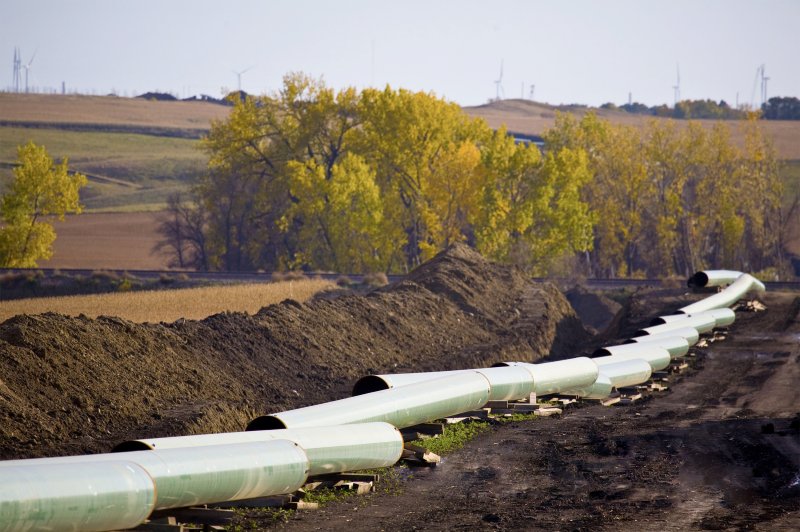After clearing a hurdle for Keystone XL construction, TransCanada said it's cleared about 20 percent of what spilled from the original network in South Dakota. Image courtesy of TransCanada.
Nov. 27 (UPI) -- During the long U.S. holiday weekend, pipeline company TransCanada said it recovered about 20 percent of what spilled from its Keystone pipeline.
The company closed down much of the network in North America in mid-November after reporting a drop in pressure on part of the infrastructure in South Dakota. The drop in pressure was indicative of a leak and the company said about 5,000 barrels of oil were spilled.
As of Friday, the company said it recovered 1,057 barrels of what was spilled. There are around 170 people at the scene working around the clock on clean-up operations and the company said that, so far, there have been no threats to public health, air quality or waterways. A gravel road to the site was completed last week.
"Local TransCanada experts continue to monitor water quality, including additional well water testing for local landowners within the area," the company said in its latest update.
About 400 barrels of oil leaked near the Keystone pipeline in South Dakota last year. Federal investigators said the April 2016 release came from a "weld anomaly" on the pipeline and oil had been leaking from the pipeline at a rate of two drops per minute for an undetermined length of time.
The 2016 release was noticed first by an area resident who later called TransCanada to report the spill.
Construction on the Keystone pipeline began in 2008. TransCanada aims to expand access to facilitate U.S. southern port deliveries through its Keystone XL pipeline, which cleared a regulatory hurdle in Nebraska last week.
Referencing long-standing concerns about the Sandhills region in Nebraska, some of which were the source of legal battles, state regulators decided against the preferred route for Keystone XL and instead voted for an alternative route that allayed ecological concerns. TransCanada said it was studying the decision.















